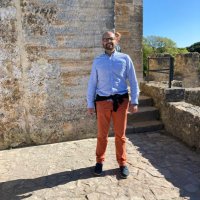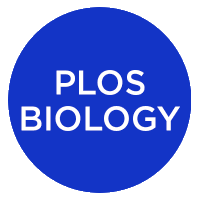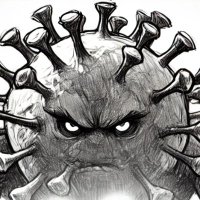
Alberto Marina
@albertomarina14
Ya lo tengo del todo a medio hacer
ID: 1093823465310822400
08-02-2019 10:46:51
157 Tweet
147 Takipçi
65 Takip Edilen

Finally out!! Our manuscript on the arbitrium system and its relation with a host toxin-antitoxin system is published today in Nature Microbiology. Kudos to Polina Guler and Shira Omer and all other authors, for this beautiful work! rdcu.be/du8T0 nature.com/articles/s4156…

OUT NOW Arbitrium communication controls phage lysogeny through non-lethal activation and inhibition of a bacterial toxin-antitoxin defense system by Avigdor Eldar @AframianNItzan Polina Guler nature.com/articles/s4156…



"This project opens up a new avenue of #research." Congratulations to Prof José R Penadés from Imperial Department of Infectious Disease who won a prestigious grant from European Research Council (ERC) to study the communication between mobile genetic elements. 🎉 More 👇 imperial.ac.uk/news/250614/mo…

Happy to share our review out today in Current Opinion in Microbiology Microbiology Elsevier. Thanks to all co-authors! A collaboration with MCarmen Collado lab IATA CSIC, Alberto Marina IBV-CSIC and Kimberley Summers 🇺🇦 from University of Warwick🧬👩🔬. sciencedirect.com/science/articl…


Led by Jakob T Rostøl and Nuria Quiles, with Lasa_Lab, we show that prophages utilise noncontiguous operons to balance immunity and autoimmunity. Our results underscore the essential fine regulation of these processes for prophages' life cycle development. nature.com/articles/s4156…


Let's not underestimate Integrons this time. They can bring cassettes from Chromosomal Integrons in many genomes. And you know what? These are packed with defence systems too!!! Check the back-to-back work from Didier Mazel Loot Céline Eloi Littner Eduardo Rocha biorxiv.org/content/10.110…


A huge step in understanding the biological role of flotillin and membrane microdomains. Led by our very own Marta Ukleja 🇵🇱🙌🙌🙌 with the help of CavaLab, Mateus lab and (twitterless) Ana Eulalio :-). CaixaResearch funding. rdcu.be/dMWvC


No sé pueden perder el seminario del próximo 2 de agosto. Lo impartirá el Dr. Rodrigo Rodrigo Ibarra Chavez de la universidad de Copenhage. El seminario será por Zoom y es organizado por el Dr. Rodolfo Garcia-C Solicitarle la liga para entrar al seminario. Estará interesantísimo.


BlaR /MecR sensor triggers resistance in MRSA by promoting the expression of BlaZ and PBP2a. In a great collaboration with S. Mobashery and M. Chang at University of Notre Dame we discover new drugs breaking signaling and rendering MRSA susceptible to beta-lactams nature.com/articles/s4158…

Some bacterial #QuorumSensing (QS) systems use oligopeptide pheromones. Alberto Marina &co show that extracellular proteases yield multiple #pheromones from tandemly duplicated propeptides, adding complexity to QS responses #PLOSBiology plos.io/46PGqxl


Exciting research from Alberto Marina's lab unveils additional layers in the complexity of quorum sensing communication and regulation. #PLOSBiology: Extracellular proteolysis of tandemly duplicated pheromone propeptides affords additional compl ... dx.plos.org/10.1371/journa…


Bacteria have a clever defense system that stops viruses from building the 'keys' they need to invade. José R Penadés 何灵尘 Lingchen He Alfred Fillol Jonasz B. Patkowski د.ناصر القريني Nasser Alqurainy Eduardo Rocha Tiago Costa Nature Communications nature.com/articles/s4146…

